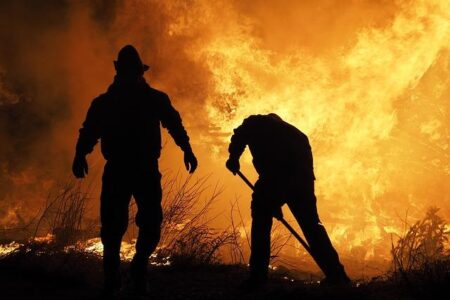Dope Thief: A Raw Philadelphia Crime Drama Unveiling Urban Struggles
Unmasking the Harsh Truths of City Crime in Dope Thief
Dope Thief plunges viewers into the relentless, unforgiving streets of Philadelphia, where desperation often drives individuals toward reckless decisions with far-reaching consequences. The series intricately portrays a chaotic chase involving small-time criminals, law enforcement, and rival groups, each entangled in a high-stakes game of survival. The characters embody the city’s multifaceted hardships, navigating a world where every choice teeters between survival and downfall. From failed drug transactions to frantic escapes, the show’s strength lies in its unfiltered depiction of the confusion and tragedy that often accompany urban crime.
What distinguishes this narrative is its commitment to authenticity, steering clear of glamorizing the criminal lifestyle. Instead, it offers a profound exploration of the emotional and social costs borne by those caught in the cycle of failure. The palpable tension emerges through fractured relationships and shifting loyalties, painting a vivid picture of life on the edge. Key storytelling components include:
- Authentic dialogue that mirrors Philadelphia’s unique street slang and conversational rhythms.
- Unfiltered portrayals of daily hardships such as poverty, addiction, and broken family dynamics.
- Unexpected plot developments that emphasize the fragile nature of trust and allegiance in this volatile environment.
| Story Element | Impact on Plot |
|---|---|
| Failed Heists | Reveals characters’ vulnerabilities and unpredictability |
| Intense Police Chases | Heightens suspense and raises stakes |
| Shifting Alliances | Exposes mistrust and survival-driven decisions |
Philadelphia’s Cultural Influence: The Backbone of Dope Thief’s Storytelling
More than just a setting, Philadelphia’s gritty neighborhoods and blue-collar spirit act as vital forces shaping the narrative’s core. The city’s blend of resilience and sharp humor permeates the characters’ choices and downfalls, grounding the story in a reality familiar to its residents. The depiction of everyday missteps, small-time hustles, and relentless striving reflects the city’s working-class ethos, where imperfections are not mere plot points but deeply human traits intensified by Philly’s tough-love environment.
The storytelling draws strength from Philadelphia’s distinctive social fabric, characterized by:
- Community loyalty: Strong neighborhood ties influence characters’ alliances and betrayals in a city where everyone’s reputation precedes them.
- Streetwise ingenuity: Resourcefulness often borders on desperation, mirroring the real-life hustle of Philadelphia’s residents.
- Blunt communication: The dialogue is straightforward and raw, reflecting Philly’s no-nonsense conversational style.
Desperation Fuels the Relentless Pursuit: Character Dynamics in Dope Thief
The characters in Dope Thief are more than criminals; they are vivid portraits of desperation molded by their circumstances. Every decision—whether a reckless gamble or a calculated maneuver—reveals deeper personal struggles. From street-level dealers to determined detectives, the cast is locked in a relentless chase driven by survival instincts rather than mere villainy. Their stories peel back layers of socio-economic hardship and shattered aspirations embedded in Philadelphia’s urban landscape.
Core themes driving this tense narrative include:
- Survival eclipsing morality: Actions are dictated by immediate needs rather than ethical considerations.
- Unstable loyalties: Trust is scarce, and alliances shift rapidly under pressure.
- Repetitive crime cycles: Characters often fall into patterns of repeated mistakes, escalating consequences.
| Character | Trigger of Desperation | Resulting Action |
|---|---|---|
| Marcus | Unemployment and mounting bills | Engages in risky street deals |
| Detective Harper | Pressure to solve high-profile cases | Pushes legal boundaries in investigations |
| Keisha | Owing money to a ruthless loan shark | Turns against former partners |
Crime Prevention Insights Drawn from Dope Thief’s Storyline
Analyzing the chaotic events in Dope Thief offers valuable lessons for law enforcement and community leaders aiming to curb urban crime. A recurring issue is the breakdown in communication—both among offenders and between agencies—highlighting the urgent need for efficient, real-time information exchange. Proactive community involvement and advanced surveillance technologies emerge as critical tools to detect and disrupt criminal activities before they escalate.
The narrative also emphasizes addressing the root causes behind criminal behavior rather than focusing solely on visible offenders. A comprehensive approach that integrates social services with targeted policing can build stronger defenses against the cycle of recidivism. Below is a strategic framework inspired by the series’ themes to enhance crime prevention efforts:
- Integrated Intelligence Networks: Combine community reports with technological monitoring to identify crime hotspots swiftly.
- Targeted Deterrence Initiatives: Focus law enforcement resources on high-risk individuals while providing rehabilitation alternatives.
- Holistic Support Systems: Align social programs with policing to tackle underlying socio-economic issues fueling crime.
| Crime Challenge | Preventive Measure | Anticipated Benefit |
|---|---|---|
| Communication Gaps | Real-time Data Integration | Faster Response Times |
| Chronic Offending | Focused Deterrence Programs | Lower Recidivism Rates |
| Insufficient Social Resources | Coordinated Social Services | Reduced Crime Incentives |
Final Reflections: Dope Thief’s Portrayal of Philadelphia’s Urban Reality
Dope Thief transcends the typical crime drama by offering a layered, authentic glimpse into Philadelphia’s urban challenges and resilience. Through a series of miscalculations and tense pursuits, the show reflects the broader struggles faced by communities wrestling with crime and survival. Ultimately, it stands as a distinctly Philadelphia story—rich in local flavor yet resonant with universal themes of desperation, cunning, and the blurred lines between hunter and hunted in the shadowed cityscape.








